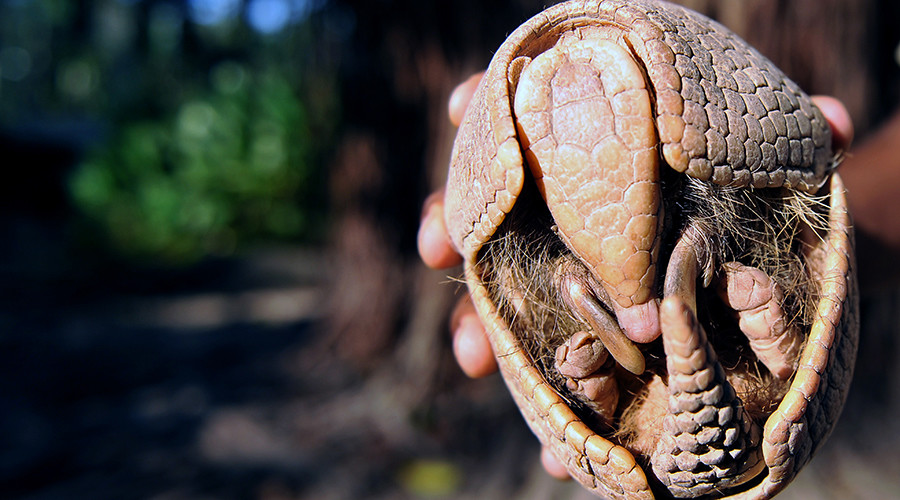
© Vanderlei Almeida/AFP
Leprosy is on the loose in Florida, thanks to the armored armadillo. Nine people have come down with the disease after coming into contact with the animal. Now wildlife experts are sending out warnings about the risks of cuddling with cute animals.
So far this year, nine people contracted Hansen's disease, the official name for leprosy, in Florida. It is caused by the Mycobacterium leprae bacteria, which can be found on nine-banded armadillos, Florida Department of Health deputy press secretary Brad Dalton told WTLV. The state normally sees two to 10 cases each year.
All of the affected patients said they came into contact with armadillos, but genetics plays a big role in who contracts leprosy after touching the animals, according to Dr. Richard Truman, acting chief of the laboratory research branch of the National Hansen's Disease Program in Baton Rouge, Louisiana.
"Between Texas and Louisiana and the southern United States, many millions of people have direct or indirect exposure to armadillos every day," he told NPR, noting that 95 percent of humans are completely immune to the illness.
Armadillos aren't the only animal to watch out for, though.
"All wild animals can harbor infectious agents that are harmful to people," Truman says. "If we leave animals alone and exercise caution, they don't pose a risk to us."
Prairie dogs in Arizona tested positive for bubonic plague in April, with public health officials posting signs near the animals' burrows to avoid contact after animals appeared to be dying off.
Australia's koalas aren't so cuddly anymore, with the marsupials facing a chlamydia outbreak that is threatening their population with extinction.
"There are koala populations that have experienced localized extinctions across its home range," koala conservationist Adam Polkinghorne told CBS News in December. He's working on a vaccine to save the animal from the sexually transmitted disease.
Pets can also be a danger when it comes to spreading disease. There's a long list of diseases that humans can contract from their household animals ‒ and not all are as well-known as rabies, ringworm, roundworm or cat scratch fever.
In mid-July, the US Centers for Disease Control and Prevention warned people not to kiss or cuddle with their pet chickens, after canoodling with live poultry led to an
outbreak of salmonella in the country.
The deadly bacteria anthrax is commonly found in herbivores, according to the Washington Department of Health. People can become infected with anthrax by breathing in anthrax spores from infected animal products such as wool, hides, leather or hair.
Beavers can be to blame for Giardia infections and tularemia, while handling the placenta of livestock can cause brucellosis and Q fever.
And crazy cat ladies can always blame their fascinations with felines on the Toxoplasma gondii parasite, which lives in cats. The parasite, which lives in cats, makes them more attractive to their natural prey, but it can also affect human's personalities, and may cause schizophrenia in extreme cases,
Time reported in 2011.
Up to 10 percent of Americans can carry the parasite ‒ in their brains! ‒ that can also cause toxoplasmosis. However, the disease can cause birth defects if a pregnant woman comes into contact with the parasite, which can often be found in cat feces.
Comment: See also:
SOTT Exclusive: Natural Pet Health: Top 10 issues facing pet owners when it comes to your pets' well-being